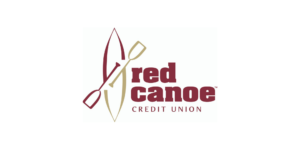
This Is the Whole Point of Business Intelligence
The goal of business intelligence is to make better decisions and take action for a better future. Let’s explore this core concept and why BI is important.
Our AI Platform offers both the tools and guidance to transform vast amounts of data into a competitive advantage leveraging generative AI.
To compete in today’s business landscape, organizations in every industry must be savvy with data. Making quick, data-informed decisions is a key driver of business success. You can capitalize on business intelligence with the right setup and support.
Skypoint helps you identify valuable data opportunities, build robust BI tools, and implement processes and infrastructure to promote data cleanliness and governance. With our AI platform, you can seamlessly turn data into insights and insights into actions to drive more impactful decision-making.
Our Business Intelligence solution is built to help you get the most out of your data. We utilize a four-step process that incorporates vital data modeling, creating a semantic layer for businesses across diverse industries to ensure repeatable results.
With data visualization tools like Power BI, our approach provides users insight into their digital landscape — allowing them to unlock true potential from analytical results.
Skypoint’s managed BI solution provides a dynamic four-step process to create meaningful findings from raw information. With enhanced modeling and semantic layering capabilities, organizations of all sizes can reap powerful, strategic industry-specific intelligence.
Import data from disparate sources into the Skypoint Lakehouse using Dataflow, Skypoint’s built-in ELT tool.
Data is then unified through a process known as master data management—creating “golden record” profiles for ML models.
A carefully crafted data model provides an organized framework for establishing relationships between data entities, and enabling repeatable KPIs.
Visualize valuable BI and predictive insights, or export outputs and execute with 3rd-party applications.
Traditional BI solutions often overlook key steps in between collecting and measuring metrics. Skypoint’s BI solution incorporates essential data modeling for creating reliable results that can be applied across all industries.
By using customized data models and semantic layers, Skypoint’s BI saves time and resources by providing a framework for analyzing and visualizing data that is specific to healthcare, senior living, retail and hospitality.
With our managed BI services, you get a dedicated team of experts managing your BI infrastructure, ensuring data quality, security, and compliance.
Skypoint’s BI solution incorporates a vital data modeling process, critical for creating scalable insights that can be standardized across industries.
Skypoint unifies and transforms data to a specific structure, creating a semantic layer that enables users to easily visualize data in popular tools like Power BI and Excel.
Skypoint’s Headless BI promotes streamlined workflows and business optimization by integrating directly into other applications. End users can access data instantly through an API or query language, allowing for customized visualizations tailored to their needs. Separating the user interface from the analysis helps improve efficiency when leveraging insights from complex datasets in various systems such as CRM or ERP platforms.
Analyze data using a variety of techniques, including statistical analysis, data mining, and predictive analytics.
Create visualizations that enable users to quickly and easily interpret data, including charts, graphs, and dashboards, using popular tools like Power BI, Tableau, and others.
Generate reports that provide a summary of key data insights, trends, and KPIs.
Enable users to access and analyze data without the need for IT assistance, through user-friendly interfaces and drag-and-drop functionality.
Ensure data security and compliance with industry regulations, including data encryption, access controls, and auditing.
These healthcare-specific KPIs help payers and providers identify areas where they can improve across four main areas: patient outcomes, patient experiences, reducing healthcare costs, and optimizing the well-being of healthcare providers.
130+ standardized KPIs help senior living operators and REITs identify areas where they can improve resident care, reduce costs, optimize sales and marketing outputs, and monitor staffing satisfaction to mitigate burnout.
These retail-specific KPIs help identify customer pain points, predict potential outcomes, and provide proactive, unparalleled experiences throughout the buyer’s journey.
These hospitality-specific KPIs help identify pain points, predict potential needs, and provide the unique, personalized guest experiences they came for.

The goal of business intelligence is to make better decisions and take action for a better future. Let’s explore this core concept and why BI is important.

This Ultimate Power BI Licensing Guide walks you through different licensing considerations so you can find the perfect mix for your Power BI rollout.

Learn how Red Canoe Credit Union exceeded its own expectations and completed a successful Tableau to Power BI transition in less than 30 days.

Ready to uncover and leverage valuable insights? Here’s what it’s gonna take to master self-service analytics and BI, so you can succeed in your industry.
Learn how HAPO credit union modernized their data and analytics processes with WhereScape data warehouse automation and Power BI to forecast trends and react faster during uncertain times.
Today you have a ton of data that is working against you rather than working for you. We’re excited to show you a better way with business intelligence.
Having unique tools for specific use cases is not uncommon—in fact, it’s usually required to get the job done right. Unfortunately, this growing laundry list of tools and systems (aka “data stack”) means you’ve got priceless data piling up in separate silos everywhere.
Implement a centralized data repository that integrates with all touchpoints to unify data from multiple sources and create a single source of truth.
You don’t need to have all of these high-cost internal resources around all the time. Instead, you can find creative ways to access advanced-level skills, services, and solutions. An intuitive, self-service BI tool enables business users with no technical skills to build dashboards, visualize data, and turn insights into actions.
Whenever you do decide that you need data scientists and developers, Skypoint Cloud is ready to jump in to support your team.
Data silos lead to conflicting and inaccurate analytics, which does more harm than good when you’re trying to leverage data to advance the business. You need to unify data from multiple sources and create a centralized single source of truth.
Your BI solution is only as effective as your team’s ability to use it. It’s time to focus on building a data-driven culture, providing ongoing training, and implementing an easy-to-use data platform that drives adoption.
Our Modern Data Stack Platform offers both the support and the technology to help you get the most out of your existing BI solutions. Bonus: Since Skypoint Cloud has 200+ integrations, you’ll get more value from your other applications too.
Ready to get the most value from your data? Skypoint Cloud connects unified data with the most popular tools so you can safely automate critical tasks and accelerate innovation.